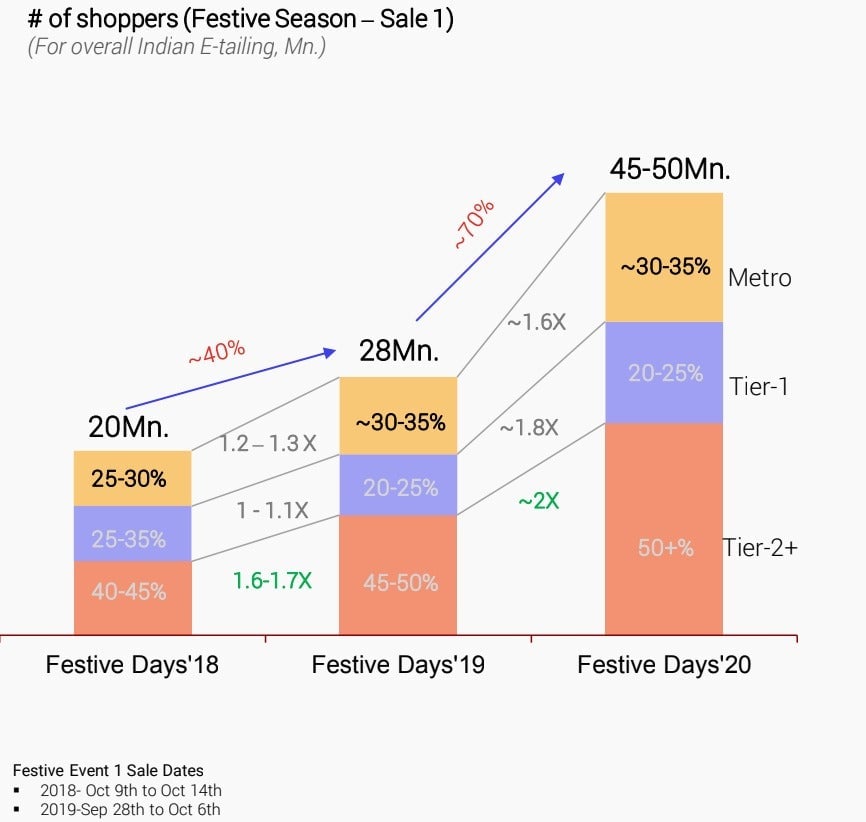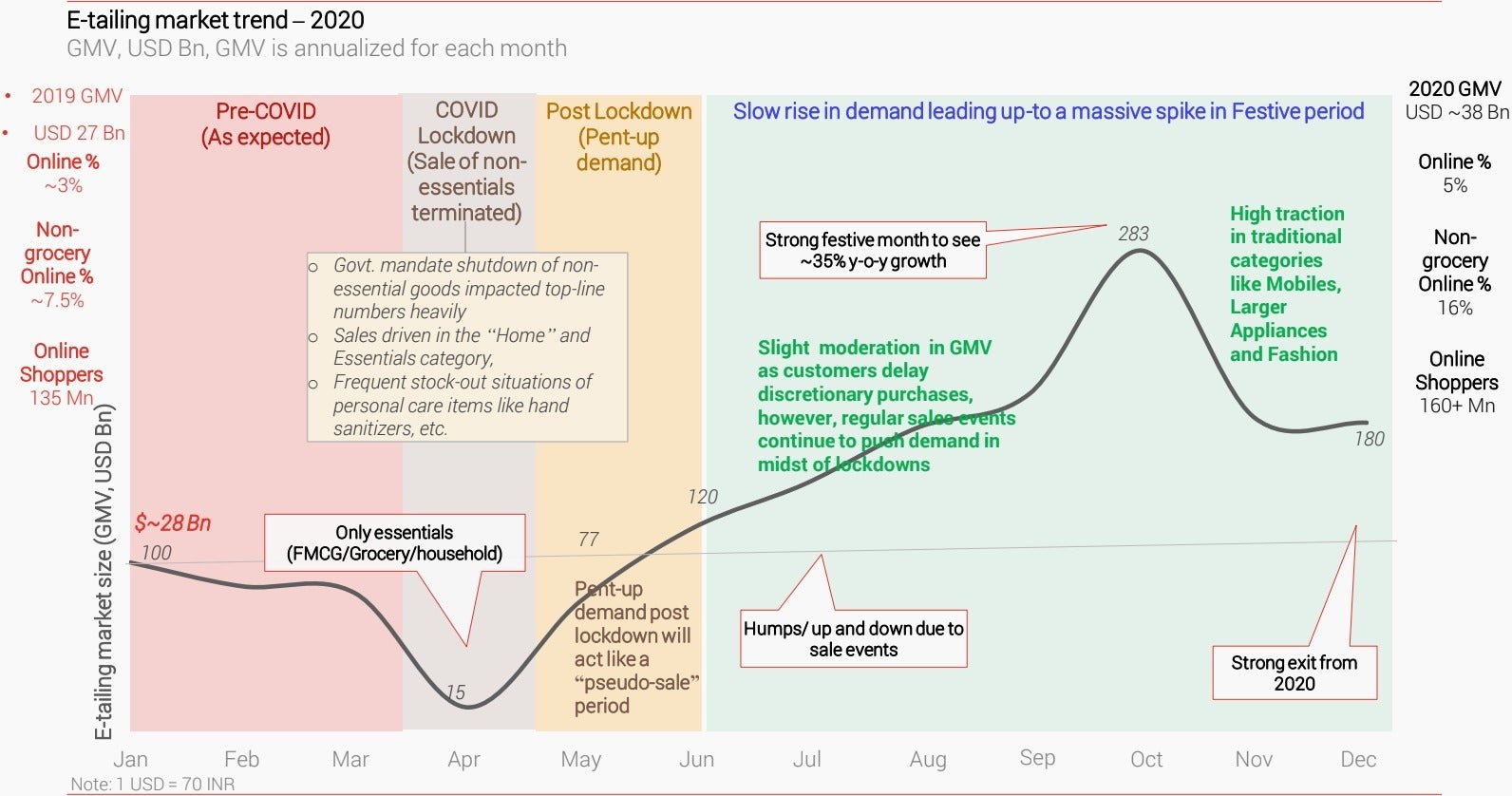India’s online shoppers will nearly double this Diwali versus 2019
Coronavirus is not getting in the way of India’s festive spirit.


Coronavirus is not getting in the way of India’s festive spirit.
The number of online shoppers in India will nearly double to around 50 million during the festive season this year, according to consultancy firm RedSeer. In 2019, there were 28 million e-tailing customers. This is despite the fact that the pandemic has severely hit the Indian economy and there have been large-scale layoffs across several industries.
The festive season in India starts with Navratri (which begins on Oct. 17 this year) and ends around the new year. As per some estimates, around 40% of all apparel, consumer durables, and electronics sales in the country happen during this period. To tap into this demand, e-commerce players such as Amazon and Flipkart hold massive sales that include new launches and deep discounts.
This year’s bonanza sales will gain from the Covid-driven adoption among shoppers from tier 2 and 3 cities, RedSeer said in a report today (Sept. 18). The rise of new models like video- and WhatsApp-based shopping will become mainstream as companies try to serve their clients better, it added.
“Covid-19 enabled massive growth in new shoppers as consumers now more than ever prefer to shop in a manner that is convenient, safe and hygienic and the e-commerce space meets these requirements,” RedSeer said.

Given the expected festive sales performance, RedSeer estimates e-commerce in India to reach $38 billion (Rs2.8 lakh crore) in sales for all of 2020, up 40% year-over-year.

While e-commerce is set to grow, recovery among brick-and-mortar stores is likely to remain weak “as consumers as still apprehensive about visiting high human touchpoint areas like malls and retail outlets,” RedSeer said. Patrons of offline organised retail during Diwali season will likely turn to online platforms for festive shopping.
During the first set of festive sales days, India’s e-commerce sector is expected to clock $4 billion in gross merchandise value (GMV), the Bengaluru-based firm estimates.
Lower value, long-tail categories will do well. Fashion is expected to pick up as activities and social gatherings increase after a lull for almost six months due to the raging pandemic. Home and home furnishings will also do better than previous years due to the high demand for upgrading work-from-home and study-from-home equipment.